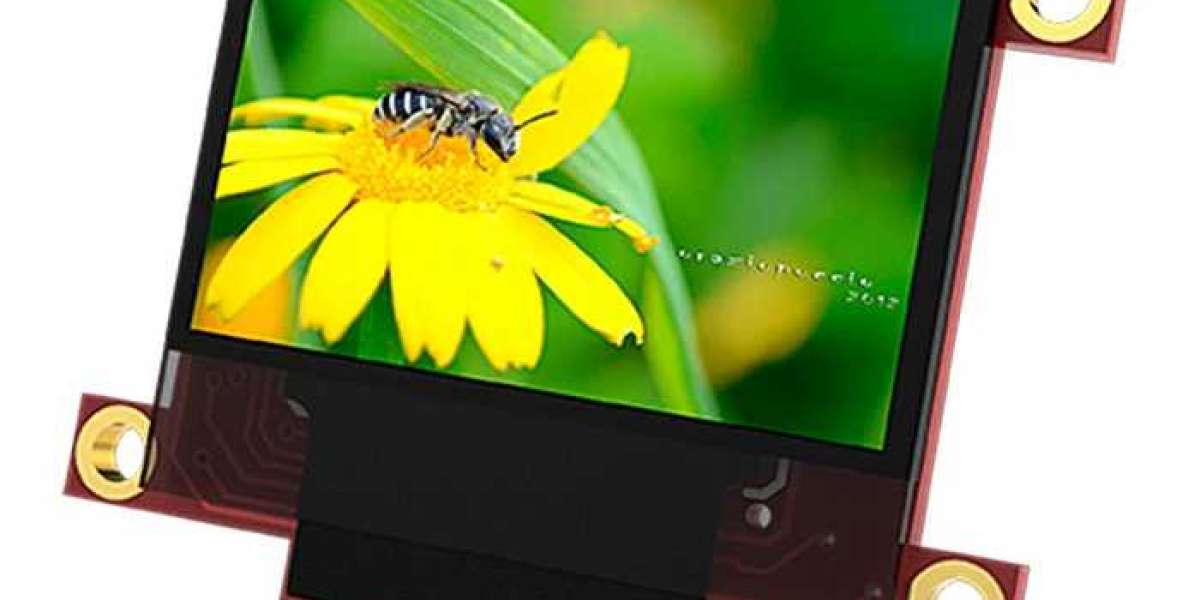The use of aluminum extrusion in product design and manufacturing has increased significantly in recent decades.
According to a recent report from Technavio, between 2019-2023 the growth of the global aluminum extrusion market will be accelerating with a Compound Annual Growth Rate (CAGR) of almost 4%.
Perhaps you’ve heard of this manufacturing process and are wondering what it is and how it works.
Today we’ll discuss what aluminum extrusion is, the benefits it offers, and the steps involved in the extrusion process.
We’ll begin with the most basic and essential question.
Step #1: The Extrusion Die is Prepared and Moved to the Extrusion Press
First, a round-shaped die is machined from H13 steel. Or, if one is already available, it is pulled from a warehouse like the one you see here.
Before extrusion, the die must be preheated to between 450-500 degrees celsius to help maximize its life and ensure even metal flow.
Once the die has been preheated, it can be loaded into the extrusion press.
Step #2: An Aluminum Billet is Preheated Before Extrusion
Next, a solid, cylindrical block of aluminum alloy, called a billet, is cut from a longer log of alloy material.
It is preheated in an oven, like this one, to between 400-500 degrees celsius.
This makes it malleable enough for the extrusion process but not molten.
Step #3: The Billet is Transferred to the Extrusion Press
Once the billet has been preheated, it is transferred mechanically to the extrusion press.
Before it is loaded onto the press, a lubricant (or release agent) is applied to it.
The release agent is also applied to the extrusion ram, to prevent the billet and ram from sticking together.
Step #4: The Ram Pushes the Billet Material into the Container
Now, the malleable billet is loaded into the extrusion press, where the hydraulic ram applies up to 15,000 tons of pressure to it.
As the ram applies pressure, the billet material is pushed into the container of the extrusion press.
The material expands to fill the walls of the container.
Step #5: The Extruded Material Emerges Through the Die
As the alloy material fills the container, it is now being pressed up against the extrusion die.
With continual pressure being applied to it, the aluminum material has nowhere to go except out through the opening(s) in the die.
It emerges from the die's opening in the shape of a fully-formed profile.
Step #6: Extrusions are Guided Along the Runout Table and Quenched
After emerging, the extrusion is gripped by a puller, like the one you see here, which guides it along the runout table at a speed that matches its exit from the press.
As it moves along the runout table, the profile is “quenched,” or uniformly cooled by a water bath or by fans above the table.
Step #7: Extrusions are Sheared to Table Length
Once an extrusion reaches its full table length, it is sheared by a hot saw to separate it from the extrusion process.
At every step of the process, temperature plays an important role.
Although the extrusion was quenched after exiting the press, it has not yet fully cooled.
Step #8: Extrusions are Cooled to Room Temperature
After shearing, table-length extrusions are mechanically transferred from the runout table to a cooling table, like the one you see here.
The profiles will remain there until they reach room temperature.
Once they do, they will need to be stretched.
Step #9: Extrusions are Moved to the Stretcher and Stretched into Alignment
Some natural twisting has occurred in the profiles and this needs to be corrected.
To correct this, they are moved to a stretcher.
Each profile is mechanically gripped on both ends and pulled until it is fully straight and has been brought into specification.
Step #10: Extrusions are Moved to the Finish Saw and Cut to Length
With the table-length extrusions now straight and fully work-hardened, they are transferred to the saw table.
Here, they are sawed to pre-specified lengths, generally between 8 and 21 feet long. At this point, the properties of the extrusions match the T4 temper.
Aluminum profile advantages
Aluminum profile advantages,why choose aluminum profile, not brass, not iron, not stainless steel? It is aluminum profile.
1 The density of aluminum profiles is lower than other commonly used metal density, light weight; the density is only 2.70 g/cm3, 1/3 of copper or iron.
2 Hot and cold both treatment process, it has strong corrosion resistance
3 Global aluminum has rich reserves and it has high aluminum content in the earth
4 Good ductility and elongation, which can be alloyed with many metal elements to produce light alloy material quality
5 Strong deformability, good yielding ability, has the advantages for the production
6 Good casting properties
7 Good performances for the surface treatment
8 Stable chemical properties, non-magnetic, can be recycled and reused, it is a good and recyclable metal materials
9 Small elastic coefficients, no spark in collision and friction, the best performance in automotive technology
10 Anti-nuclear radiations
11 No metallic pollution, no poison, no volatile metal in the surface oxide layer
12 Good thermal properties and electrical conductivity, it is outstanding performance in the short-distance power transmission.
The aluminum profile is common metal materials in the social production, which has a wide range of applications in the aviation, construction, condenser, auto parts and other industries. Its excellent performance and many advantages, make aluminum profile got favors by the industry at large.
What is a Door Profile?
Door profiles are useful accessories used to fill the gaps at points where a floor ends, and another floor begins. For example, say your hallway has wooden floorboards running along the length of the hall, but your living room has a carpet, you would use a door profile that slots under the door to bridge the gap between the two rooms/floors. It is useful to note that there are different names for these accessories like: door bars, door thresholds, door trims, or door strips. While there are minor differences for some of these, they all perform the same function.
There are various types of door profiles depending on the flooring you have, as well as the material and height of the flooring. Take the example mentioned above, if you have two rooms, one with a wood floor and another with a carpet, you would need a special type of door profile where one side will hook into the carpet to hold it down, and the other side will simply sit next to the wood floor, allowing it room to expand while bridging the gap between the two together.
For floors that are of different sizes, say a wood floor in one room is 14mm, then you have a vinyl to a connecting bathroom that is 7mm, a normal door profile will not fit as it would be unlevel with a 7mm gap on one side. In this case, you would need a ramp, which is a door profile that curves upwards to account for the differences in length and joins the rooms adequately.
Door profiles can come in a range of colours and materials depending on your interior and the general aesthetic of your room. You can get solid oak door bars, which then come in various shades like lights, darks, greys, etc. Then you can get metal ones, most commonly in the gold and silver colours. These tend to be the go-to options as it is generally recommended that you match your profiles to the colour of your door handles. This is because if you try to match the door profile with the colour of your floor, you will struggle to find an exact colour match, as flooring manufacturers do not make their own door profiles, so you run the risk of it looking discoloured.
uPVC Windows Profile Options
uPVC windows profile come in various shapes, sizes and colour options. The different uPVC systems are suitable for both domestic and light commercial use. Once you have made the decision to purchase new uPVC windows, the cost will be determined by a number of factors:
Number of windows and doors required
Size of windows and doors required
Colour and profile type, also called the system chosen
Choice of glass, whether double glazing or triple glazing for uPVC windows
Specification of glass, e.g. toughened, laminated, decorative etc.
Hardware options, handle type and colour for example
Cost of installation if not supply only
Other personal preferences
uPVC Profile Options
There are various uPVC windows profiles available for you to choose. The profile type, also referred to as the system, determines what the finished window looks like. Here, we we are concentrating on the profile options that Deceuninck extrude. We use these profiles to manufacture our uPVC windows and doors. The profile types are:
Chamfered (referred to by Deceuninck as Traditional 2500 Series)
Sculptured (referred to by Deceuninck as Heritage 2800 Series)
Flush (2800 referred to by Deceunick as Heritage Flush Sash)
Why choose a Deceuninck profile? Deceuninck are a leading extruder of premium PVCu products. They are renowned in the industry for quality and excellence.
We cover in more detail what the main differences are below, but to summarise:
Chamfered (2500) sash windows offer a similar look to sculptured but with a sharper looking detail
Sculptured (2800) sash windows on any outward opening window stand proud of the frame, overlapping it all around
Flush casement windows have the opening sashes sitting within the frame and flush with the outside and inside face of the window
uPVC Product Options
Deceuninck Chamfered (2500) and Sculptured (2800) series profile can be used for:
Casement Windows
Tilt Turns
Residential Doors
Patio Doors
Painted Windows
Angled/Arched Frames
If you require the uPVC Casement Flush Sash, this is only available in Deceuninck 2800 series profile.
What is the Difference Between Extruded Aluminum and Cast Aluminum?
Aluminum is an extremely versatile metal in that it is a great candidate for a wide range of manufacturing methods, two of which are extrusion and casting. You might find yourself asking, “What is the difference between extruding and casting of aluminum?” Extrusion is a process by which aluminum billets are forced through a die, resulting in a desired cross section. Whereas, casting is a process in which molten aluminum is poured into a mold and then allowed to solidify. Each method of manufacturing aluminum parts has both its advantages and disadvantages, but both offer a savings over machining the part from a solid by creating a near net shape and reducing machining time. Whether you think you need aluminum extrusions or are considering aluminum castings, you can count on the team at Howard Precision Metals to point you in the right direction.
Extrusion: An Economical Manufacturing Process
Aluminum extrusion is a generally competitive and economical production option especially when dealing with very complex cross-sections. A new design of a custom shape aluminum extrusion can be produced in as little as 8 weeks. Such shapes and features that can be extruded are: press and snap, sliding fits, tongue and groove, self-tapping screw boss holes, hinges, snap-fit joints, flanges, screw ports, anti-skid surfaces, and much, much more. Initial costs of extrusions are attractive as well. Die engineering fees for new custom shapes are much less than when compared to castings. Extruded aluminum shapes are also produced with an excellent surface finish and are typically stronger in comparison. Some products produced by the extrusion process are heat sinks, window and door frames, manifolds, and lighting track equipment. The possibilites are endless. A disadvantage of extrusion when compared to casting is the size constraint. Aluminum extrusions are limited by the size of both the billet and the capacity of the cylinder on the extrusion press. Castings have no such limit and are often used to produce very large items. Even with the size limitations of extrusions, there are still a myriad of applications of which this method of manufacture is the preferred choice.
Aluminum Casting
Aluminum can be cast using any of the available casting methods. Some of these casting methods are continuous casting, investment casting, plaster casting, sand casting, permanent mold casting, and die casting. Additional casting processes such as hot and isostatic pressing, squeeze casting, and lost foam are also possible with molten aluminum. Despite the different names and methods, all casting has one thing in common: Molten aluminum is poured into a mold that makes a pattern when the aluminum is cooled. When compared to extrusion, casting is a much slower process. Seams and mold imperfections can also be present in cast parts. This often requires a secondary process, known as fettling, to be necessary to remove such imperfections by cutting, grinding, or sanding. Nonetheless, casting still has its place in manufacturing. Casting of aluminum is a very common manufacturing method of such products as cookware, small appliance components, or decorative parts. The most common and largest market for aluminum castings is in the automotive industry. More than half of the aluminum used in cars is produced by casting.



